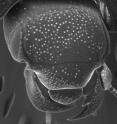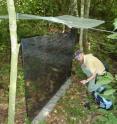Little did we know about beetle diversity: Astonishing 138 new species in a single genus
The tropics are home to an extraordinary diversity of insect species. How great is it, exactly? We do not know, but today, researchers at the Santa Barbara Museum of Natural History published a study on tropical beetles that can help us progress towards an answer to this question. The paper was published in the open access, peer-reviewed journal Zookeys.
Entomologists Michael Caterino and Alexey Tishechkin have named 138 new species within the genus Operclipygus (the name refers to their clamshell-like rear end), thereby increasing the size of the genus over six times. The work is based on a study of over 4000 specimens amassed from natural history museums all over the World, as well as specimens from fieldwork collected throughout Central and South America by the authors.
The lead co-author of the paper, Dr. Caterino, comments of on the significance of such biodiversity: 'We all know that forests in the tropics are disappearing. But we only have the faintest idea of how much biodiversity is disappearing with them. Studies like this are critical to seeing where the greatest diversity is, and finding out the best ways to protect it',
These beetles all belong to a family known as histerids, or 'clown beetles'. All of the newly described species are similar in appearance to a poppy seed -- small, round and black. Because of their extreme abundance, however, they have an ecological importance disproportionate to their size. As voracious predators of other insects' larvae, these beetles help controlling pestiferous flies. As in some cases their menu includes fly larvae found in decomposing bodies, some researchers have been promoting their use in forensic investigations.
Since the days of Darwin, Wallace, and Bates, entomologists have both celebrated and bemoaned the overwhelming diversity of tropical insects. Modern-day scientists continue to grapple with the question of just what extent of insect biodiversity lives in the tropical parts of the World, with estimates ranging from 5 to 30 million species or more. This study is only one part of a larger revision of several related histerid genera, and it seems not to be an isolated case, with most groups revealing 5 to 6 times the species currently documented.
So while biologists have a long way to go in fully documenting the species diversity in rapidly-disappearing tropical forests, comprehensive taxonomic revisions of neglected insect groups can help to clarify the magnitude of what's at stake. This project was funded by the Advancing Revisionary Taxonomy and Systematics program of the U.S. National Science Foundation, and it clearly demonstrates what dedicated support for taxonomy can do for our understanding of global biodiversity.
Dr. Caterino closes: 'We're committed to doing our best to let people know what's out there before it's too late'.
Source: Pensoft Publishers
Other sources
- Little did we know about beetle diversity: Astonishing 138 new species in a single genusfrom Science DailyWed, 20 Feb 2013, 18:31:00 UTC
- Little did we know about beetle diversity: Astonishing 138 new species in a single genusfrom PhysorgWed, 20 Feb 2013, 17:00:46 UTC


